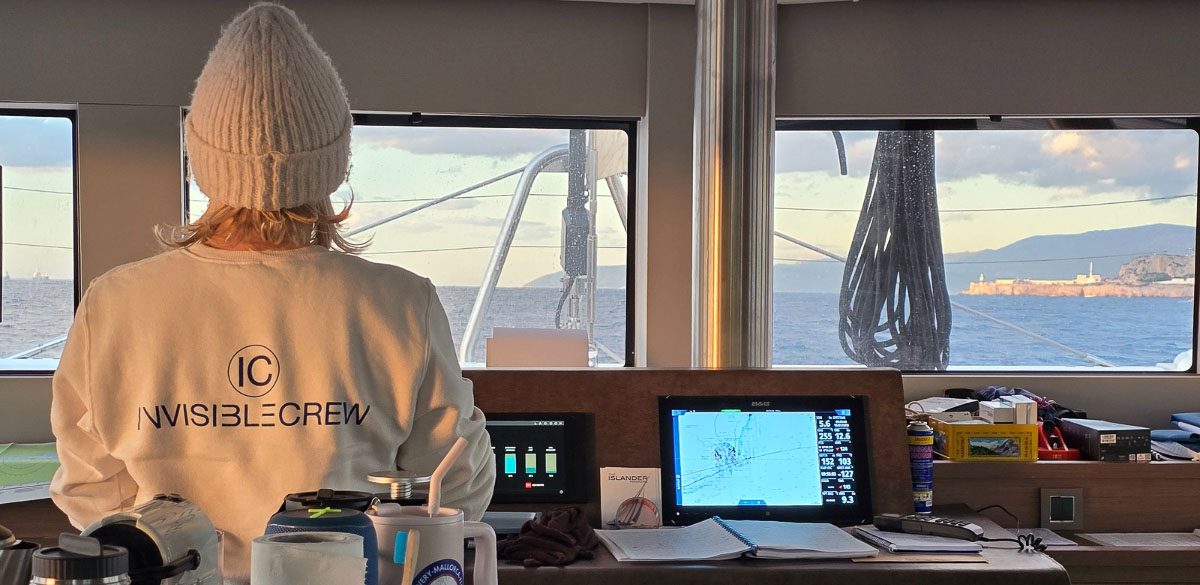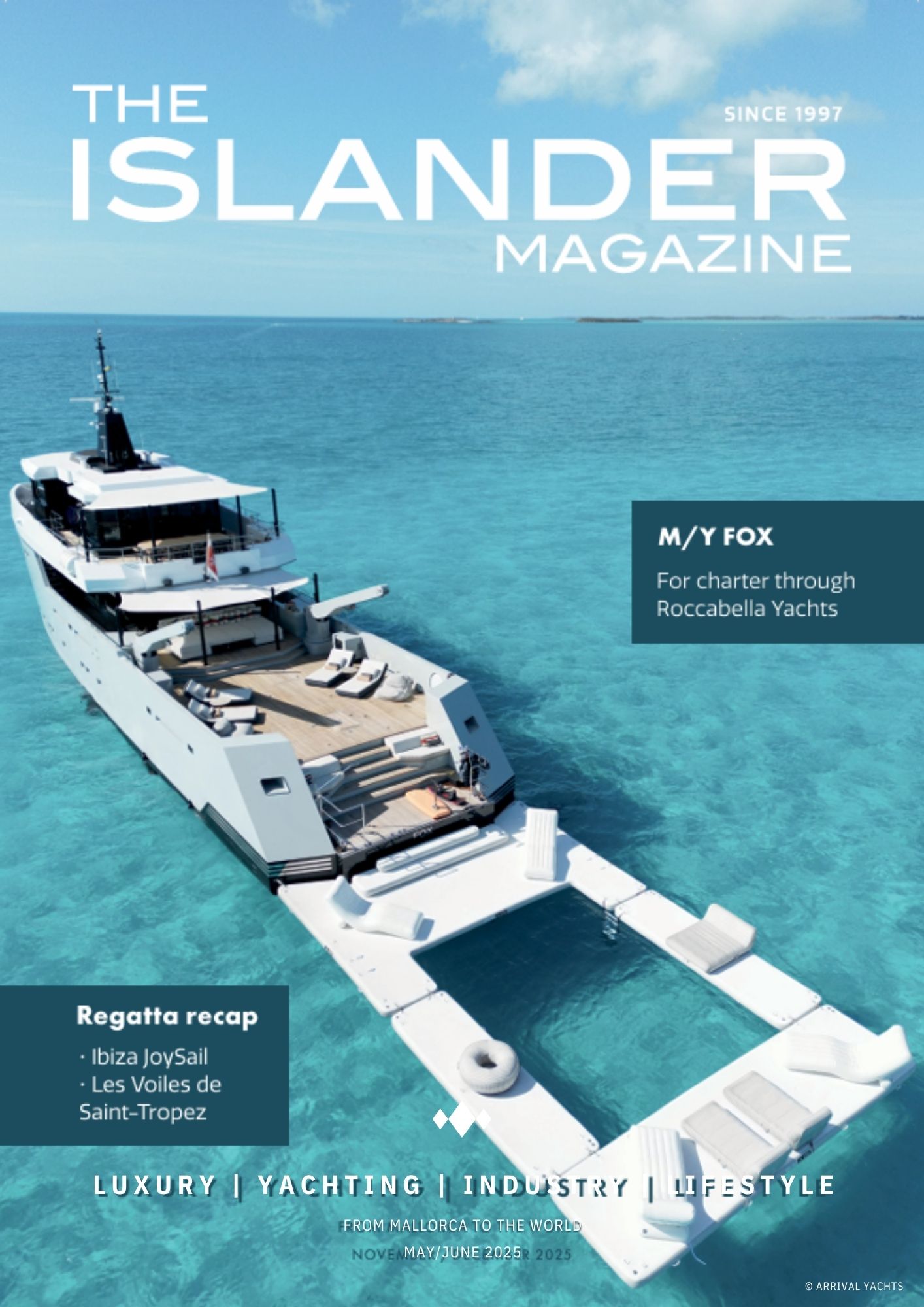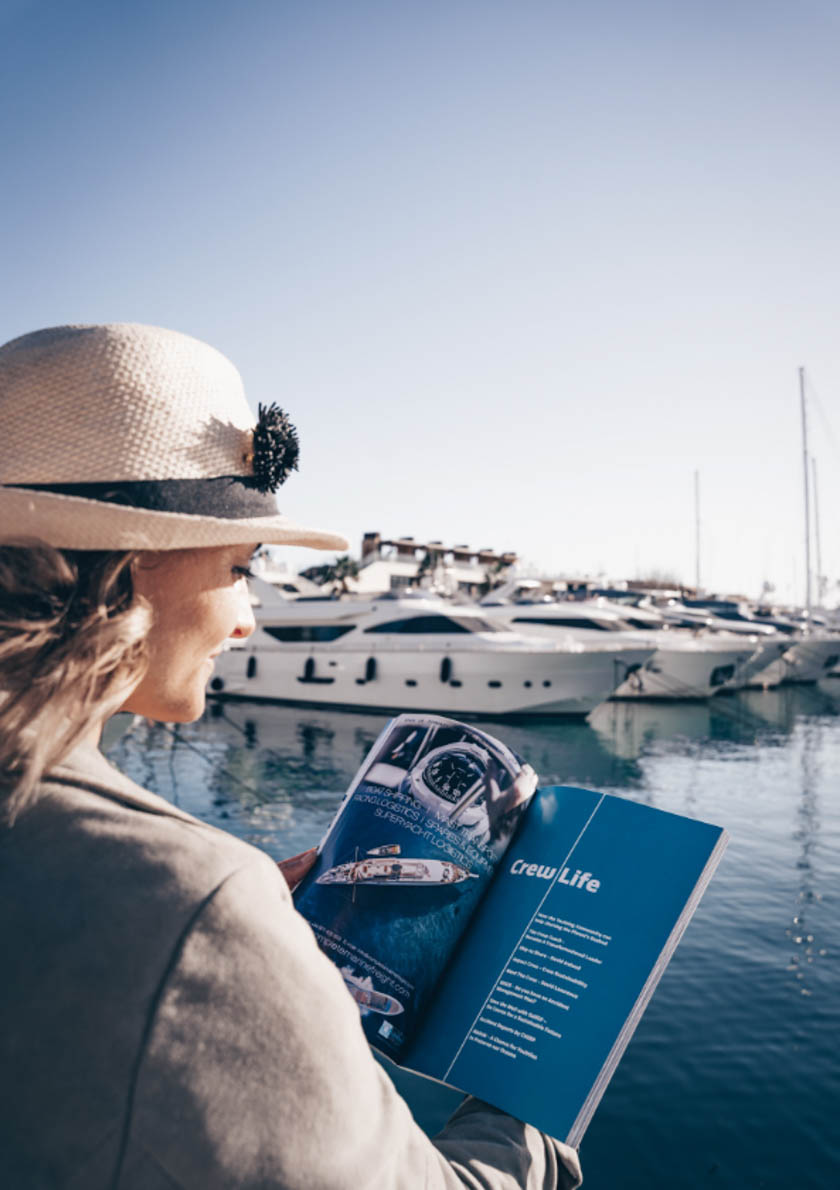The ship’s journal from the Delivery from Mallorca to Fiji
Update 27/01/25 1130 GMT 25⁰54.2’N 18⁰24.8’W
The darkest night.
We left Las Palmas under dreamy conditions. The wind is wonderfully consistent. If we could choose, we’d ask for these 16kt – 20kt winds. We knew we had to avoid the lee of the islands where the winds are too light. So we sailed on port gybe towards the coast of Morocco.
I started my nightwatch at 3 a.m. It felt great to be out there and I was taking it all in although the stars and planets that An and Jan reported weren’t visible anymore. Neither was the moon. It didn’t bother me… yet. Our course was south-south east and I wondered if gybing would take us too much west too soon. Ideally we’d be on a South Westerly course to stay in these wonderful tradewinds. Was it the sleep that had now been wiped from my eyes, or had those dozens of dimly lit Moroccan fishing buoys really been invisible five minutes ago?
I kind of liked how the decision on gybing was made for me. And westward we went, sailing at a wonderful 8 to 9 knots. And then… darkness. All the screens went dark, all the lights went out and it took 3 seconds to realise that now the autopilot was off as well. I grabbed the wheel and alarmed the crew. I didn’t want to completely freak them out so I tried to whistle in a way that has some lightness in it. Ask me how that goes next time you see me!
An and Sara ran up to the flybridge. The lightness had been conveyed because Sara had told Jan to stay in bed. That was ok for me because there was a chance that this could take a while and watch systems exist to manage crew energy levels.
I gave the helm to An. These boats have a hydraulic steering system so you don’t feel the pressure on the rudder. You feel less than what you feel behind the wheel of your car. You feel nothing. Poor An was in a deep sleep 60 seconds ago and the night sky was very dark, so there was no point of reference. We hove-to. This basically stops the boat while the sails are up. I started my investigation.
The house battery bank showed a 60% charge and they should only cut out at 20%. So I wasn’t sure if low batteries were the reason for this blackout. I started the generator, some lights came on, a relay was clicking, lights went off again, on again and to my horror the generator stopped. The screen showed that there was no sea water flow to cool the engine so it stopped to protect itself. Here’s where I made an incorrect assumption. Yacht captains have a tendency to moan and complain about how yachts are designed and built. Not rarely are they right in questioning why certain things are done the way they are. The generator is cooled by sea water and sits in the middle of the boat, about 1,5m above the waterline. Therefore an external water pump is installed to push the seawater up to the generator. I immediately thought some genius had wired this pump to the house batteries, instead of the generator’s own starter battery.
An was very uncomfortable at the helm and I had to go back to the wheel. Instead of looking for clues in the engine room or in manuals I was going to be tied to the wheel until sunrise. Sailing on the Garmin app on my phone and the windvane only visible because we were shining a torch on it, I wondered if these device’s batteries would last till daylight. We set the course close to the wind, trimming the sails by hand, with the aim of catching cell reception from the Canaries. Our Starlink was obviously not working without power.
Suddenly I remembered that I, so diligently, had cleaned the generator’s seawater strainer. I told An to check the seacock. And yes, I made the rookie mistake of not opening the valve after the job. An started the generator and it ran! But still that relay was clicking and the lights didn’t stay on. An took over the helm and now that we were sailing closer to the wind she held a steady course. I found the switches that override the batteries and allow the generator to power the boat directly. Now we had power. We had autopilot! We had Starlink. We still didn’t have batteries though. And when we used the winches to trim the sails, the navigation equipment, including the autopilot, would cut out again. It didn’t make much sense to me and my thinking process was interrupted by whatever needed to be done at the moment to keep the boat sailing. After sunrise the kids were up. The wind made them very excited and they were practicing their (most annoying) songs.
At least they were happy. Despite it being a Sunday, I had text conversations with Borja from Balearic Boats, who in hindsight had given me the solution very quickly but it involved shutting the whole boat down again. Something I was reluctant to do. Andrew Fairbrass from Berthon kept coming up with thoughts and suggestions and eventually showed me a picture of the reset button on the batteries. You can turn it left and right, which I had already done. But, you could also push it in!
Click, click, click and the ordeal was over.
The batteries had been completely offline all the while. They had gone into protection because they weren’t at 60% as the main display showed, but much lower! Now we know we can only trust the Mastervolt display which is hidden inside a cupboard. Why are certain things done the way they are?
In my course How To Work On Pocket Superyachts I coin the phrase “A captain is only as good as his contact list.” I’m grateful for my contacts!
With Tenerife back in sight, we changed course and headed for the Caribbean again! The amazing sailing conditions haven’t changed and we’re having a good time. Last night was wonderfully uneventful!
























0 Comments